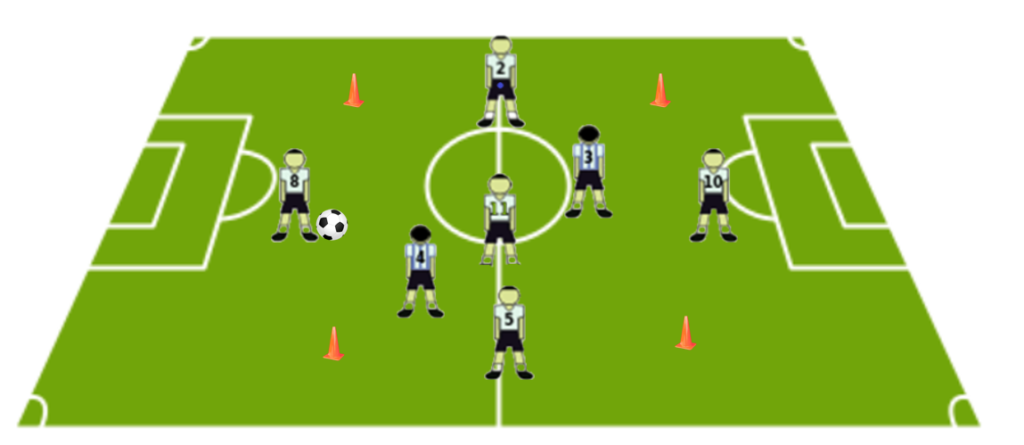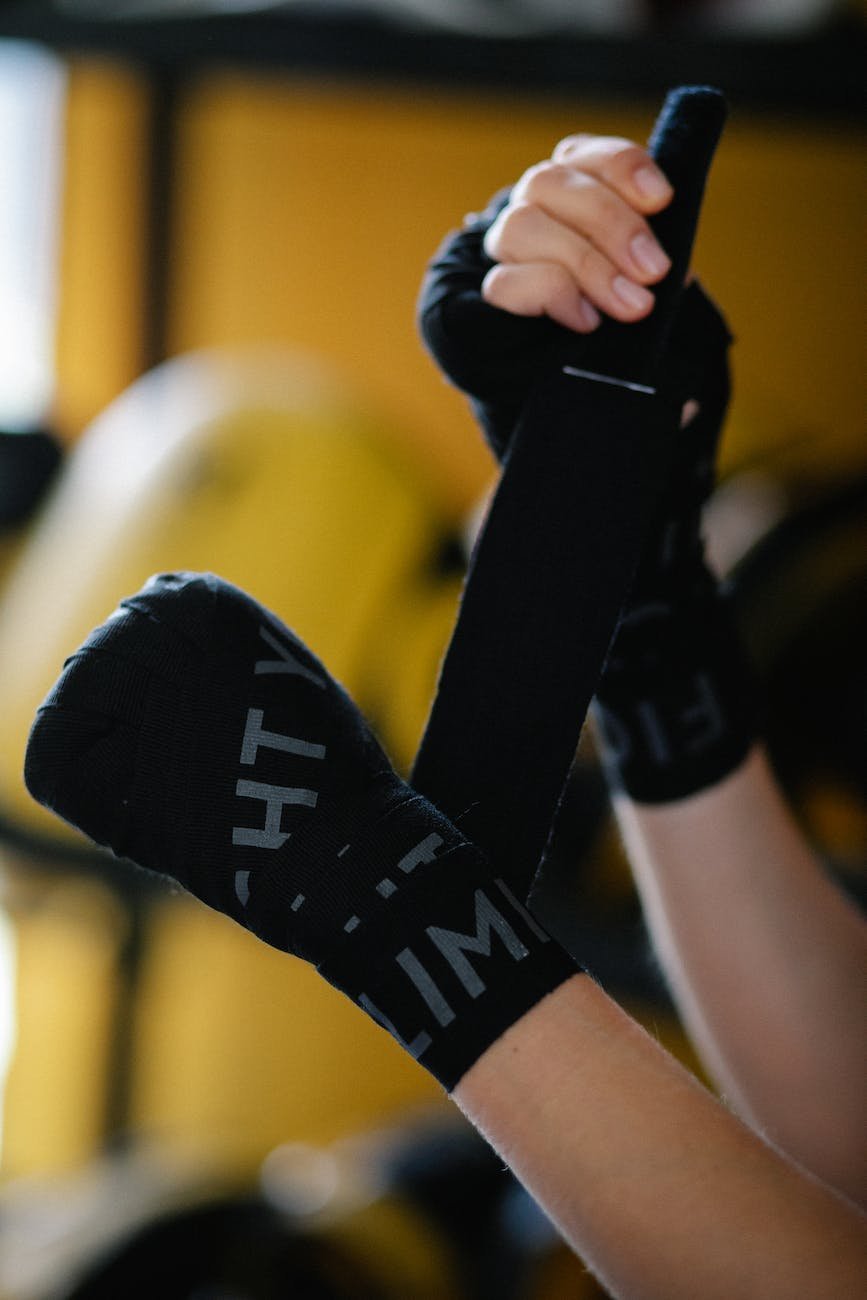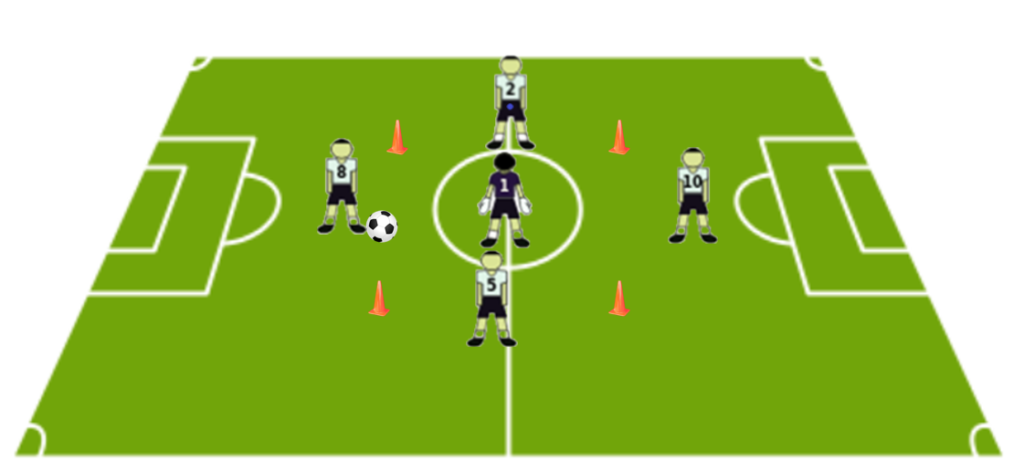Why Technology in Soccer Development will be Revolutionary? [2025]
The Future of Soccer Development 2024
Technology is both exciting and scary. Perhaps not the use of technology in soccer development, but in almost everything else. We are bombarded by the horrible outcomes that AI will cause in this world. One side says that we will all be replaced and become jobless. Another side is saying that AI is already working against the human race and any day now it will win. We don’t know about AI, but we know soccer education and we’ll focus on exactly that. How do we develop soccer players? How can the technology help us do a better job at the moment? Where it will be in the next decade or two?
Which technology are we going to look at?
Before we jump into it, let us just define the technology we will analyze and which ones we will avoid. Computer technologies, including AI, machine learning, computer vision, AR/VR, data science, and wearables are all fair game in our analysis. As you can see it is all based on captured videos of soccer practices and games. We will not talk about sciences related to chemicals, drugs, or gene editing. It is a fascinating area of science and there is so much to explore. But we just don’t feel like experts in the area and don’t think we can add much color to it. If you are interested in learning more about gene editing our way to a superhuman without one word about soccer, we recommend most of the 500+ pages of The Code Breaker by Walter Isaacson.
But what if we can use technology in soccer development to create the environment and achieve superhuman results through all the knowledge of psychology, child development, sociology, and technology that we have at the moment…
What are the challenges that soccer coaches face?
Let’s talk about what a technical soccer skill is – it is a motor skill, meaning the specific movement of the body’s muscles to perform a certain task. It is important to distinguish that there is no decision-making in this process, only the execution of a predetermined action. At the highest level of competition, the decision is conscious and the skill is subconscious. Colloquially, some people refer to it as muscle memory, and is present in all sports, playing instruments, body movements, and even writing. However, once we form our handwriting in our childhood, we do not change it in our life unless some serious injury occurs that forces our neural system to adjust. In the world of soccer, the legendary Arsenal manager of 22 years, famous for his talent identification, said:
…the base of the player is the technique. You get that between seven and fourteen years of age. If you have no technical skill at 14, you can forget it, you can never be a football player.
Arsene Wenger
Ironically, the most important on soccer development is actually not a soccer book. The Talent Code by Daniel Coyle explains what soccer skill is and how to develop it. The complete complexity of the myelin production neural pathways is too much to be fully explained even in that book, let alone this article. To simplify, the way to develop a skill is to strengthen the correct neural pathways that transmit the electrical impulse so that the muscles can behave to achieve optimal performance. Talent is the natural pathway, while “deep practice” is the best process of making the channels bigger and stronger.
How do we do “deep practice”?
Let’s think about – how did we learn to write? We isolated only one letter, broke the task into pieces, and did each piece of it slowly with lots of attention and focus. We repeated that many times over and today we write the letter subconsciously. Now when we write a word or a sentence, we don’t think about the steps one by one. However, we decide on the words to use and the order in which to place them, and even the sentence that comes after that.
How does a piano player achieve the right tempo on technically difficult tasks? It is the same process of isolating the hard fragment and playing it correctly at a very slow speed. If that is too hard, we will split it into only the left and only the right hand separately. Then we will bring it together at a slow speed, before proceeding at a higher tempo. When the pianist moves to a higher speed, it is an adjustment or a correction and with the appropriate repetition, it strengthens the neural network even further.
The way we do deep practice is through precise repetition in a controlled environment. Let’s split those two interdependent terms. If the repetition is not precise, it will create a strengthening of the incorrect neural connections, resulting in a sloppy technique. Subsequently, that leads to creating an uncontrolled environment at the highest level of competition. On the other hand, if the environment is not controlled, it leads to an imprecise repetition and forming of the wrong muscle memory.
Why can’t coaches just teach “deep practice”?
Now that we know what the secret is, why can’t we just do it? Well, have you had an argument with a kid that they should practice their violin? If it is too easy then it’s boring. If it is too hard then it’s daunting. And this is a piece of music targeted specifically for the skill of this violinist. Now, try to target the right drill at the right level for your 15 soccer players at the same time. Impossible! What if there is a way to monitor the challenge to make it just right, at the right time for each player?
Flow
Let us make one more analogy with the 5 heart-rate zones and our soccer deep practice. We sit and lay down in the resting HR, so not really useful zone for our goal of deep practice. Light intensity is where we get sloppy because we lose focus and don’t have full control over our movements. Moderate intensity is where all our focus is on the precise movement, with no effort spent on decision-making or opposition. Vigorous intensity is when we have competition at practice to adjust and correct for a certain level of opposition, as designed by the drill. As we have said many times, we love rondos because we decide that level of intensity and opposition. Finally, the final red zone is for games and there is no technical development there because it is an uncontrolled environment as we discussed earlier.

Why is yellow the best level for strengthening neural connections? Because that is where the human is in their flow. We enter a hyperfocus state when the task is clearly defined, it is the right level of challenge, and we receive immediate feedback. The best creators of tools for the state of flow are video games, which is why there is always a desire to gamify learning.
What will be solved by technology in soccer development in the next decade?
Green zone
Let us reuse the musical instruments examples from before. The steps to improve a particular instrumentalist are to analyze the music played, identify the issue of that particular player, and suggest the exercise to be performed. Current tech can definitely do that and will likely not need more than a smartphone to do so. It will get better with AI and potentially image processing to suggest an adjustment of the hand posture and movements. It is definitely getting us closer to the flow.
Ball mastery apps
When it comes to technology in soccer development, we already have something similar in the market. There are products and apps that give a task (might or might not be appropriate for the player) and keep track of the quality of performance. Apps like Techne Futbol show the drill in slow motion that needs to be made and give a dose of dopamine when the user accomplishes a certain time of practice. A step further is DribbleUp. They show drills for ball manipulation and ball mastery and use a phone camera to measure the success rate of it. The flow is there with a clear goal and instant feedback.
A beginner coach can watch a Youtube video and repeat the movement slowly and in steps. The coach can have a stopwatch and count the movement of one player at a time. However, only an expert coach with years of experience can identify the issue in the motor skill and quickly find a way to correct it. I believe that the technology of image processing and machine learning is smart enough to do that. It should be able to detect issues in the movement – too little hip opening, too much knee bending, or arms too static…
With the amount of soccer data and soccer drills available, it should give feedback and pick the appropriate corrective drill to fix that. Then once that is fixed it will move to the next drill for that player. I have no doubt that by the end of the decade, an app will be able to do all that.
Yellow zone
Smart soccer training gyms
When looking at state-of-the-art facilities at La Masia, we can see that there are small turf indoor fields for individual player development. Using multiple machines to throw and receive, a ball comes from one place to the middle where a player receives it and passes to another place where the system indicates that the ball should go with a visual signal. The system is predetermined and the variations are randomizing the locations and the speed of the ball.
However, it seems like there is very little feedback that the system does to analyze the weaknesses of the player in the middle and target those. Adding AI to the system will bring the knowledge of the best coaches from the best academies in the world, practically to any gym that will have this system. A player can rent the tool and practice on their own the same way the best players in the world. Globalizing this tool will uplift soccer development in the world.
Devices
We talked about getting in the challenging zone with rondos, which makes us dominant in terms of numbers when we are in possession. However, it is up to the coach to design the right environment to dose the challenge just right. Now imagine using VR and AR devices we can always have the right amount of challenge. Imagine your teammates and opponents moving at the right place to vary the situation, so you make progress but are not overwhelmed. Wouldn’t that be amazing? We will be permanently in the correct zone for development and the situations will be designed to strengthen the exact neural connection that we want. That would be amazing and while it might take more than a decade or two to get to that point, we can see it happening at some point.
Why will the coach not be replaced by the technology in soccer development?
So, the soccer coach is done and we can finally stop coaching kids and just watch the World Cup? As if. The Talent Code talks about two other key components in the mastery of a skill – ignition and master coaching. I know from my cardio exercises that staying in the yellow zone is hard and it often requires a mental push. That ignition has to be sparked by the coach. However, master coaching requires silent observation and occasionally encourages good behavior and corrects bad one.
Have you ever noticed that a coach is good for a certain age group, but not for another? Being a youth soccer coach has three phases – animator, teacher, and competitor. That is according to the book that documented the path of soccer development in Croatia. For context, Croatia won 2nd and 3rd place in the last two World Cups. With a population of less than 4 million people, they had no business passing the group stage.
Soccer coach profiles
The animator role of a coach is for the youngest group of players, 10 years old and younger. At that age the ignition is not really there naturally and no technology will create it. Between the ages of 11 and 15, the profile of a coach-teacher comes to play. The players enter puberty and the coach needs to find the right balance within the team, providing not just guidance for the individual player, but also balancing the fire in the players and even between them. Finally, when the players are growing past U16, they compete and the coaches need to do the final push to get the best out of them at the right moment in every aspect – physically, mentally, and emotionally.
These profiles will not change for the coaches with the current technology and the pathway that I can see. We are still so far from emotionally understanding, let alone connecting with the machines. Furthermore, the tech cannot help us relate to other humans in a genuine way. For example, it can help us identify who is Johnny and who is Jimmy. However, it cannot help us look genuine when we want to relate to the players. It cannot make Johnny and Jimmy like us or trust us, which is key to developing them as players and humans. Furthermore, it cannot determine that Johnny likes to compete extra today, while Jimmy looks like he is shying away from conflict. That is something that comes from life experience and emotional intelligence.
Summary
The importance of technology in soccer development has been talked about for decades. As the tech evolved over time and the amount of money poured into soccer, we are excited to see where we will get in the next decade. The future is bright and the role of the coach will change. Humans are the most adaptable species on the planet and I am sure we will adjust. However, it will be amazing to see how the technology in soccer development will create the opportunity for better technical coaching games everywhere on the planet, while the coaches can focus on adding even more value on top of it.









































